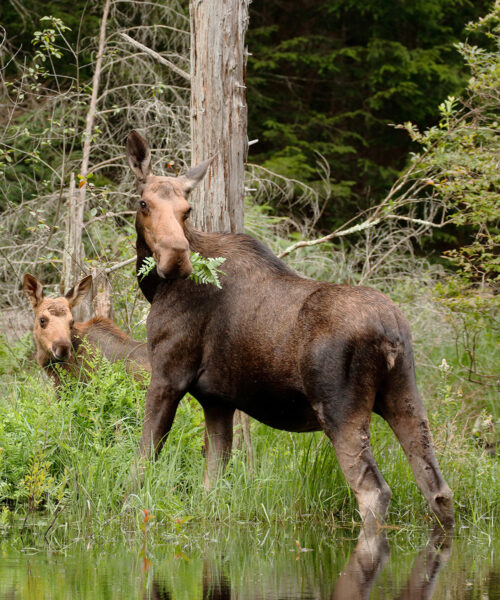July 22, 2025
By Wendy Carlson
Photo by Stephen Schumacher
It’s early morning in the Great Mountain Forest, and the only sounds out here are the call of a hawk, the crunch of hemlock needles underfoot, and the rustle of a breeze in the trees. The town of Norfolk is nicknamed “the icebox of Connecticut” for its frigid winters; this stretch of woods feels like it should be called “the quietest place in the world.”
The Great Mountain Forest encompasses 6,300 acres of contiguous forestland and seven ponds in Norfolk and the town of Canaan. It is truly vast. Walking all of its 13 trails takes commitment—although even a short foray into the forest offers a glimpse into its history. Public access is available at 201 Windrow Road in Norfolk, and near 200 Canaan Mountain Road in Canaan; there are trail maps at each gate.
Much of the forest is relatively young. From the late 1700s to the 1800s, the area was stripped of trees; the wood was used to make charcoal for blast furnaces to smelt iron ore. There are, however, remote sections that were too difficult to reach for logging—sparing trees that are now more than 350 years old.
Wildfires also reduced much of the forest, leaving behind fields and the ghostly remains of the iron-making community: colliers’ hearths, house foundations, fireplaces, unmarked graves. Early agricultural use of the land created fields and pastures, further reducing woodland. At one time, there was even a golf course in these woods.
The effort to reforest and restore the wildlife to the land began in 1909, when Starling W. Childs and former U.S. Senator Frederic C. Walcott purchased 400 acres in Norfolk, and founded what later became known as the Great Mountain Forest. Over time, they acquired more acreage; eventually the Childs family took over full ownership and stewardship. In 2003, a conservation easement was placed on the land, through the U.S. Forest Service and the Connecticut Division of Forestry. Today the forest is owned and managed by the Great Mountain Forest Corporation, a nonprofit, private-operating foundation.
Logging roads wind through the forest to allow selective lumbering, an effort to ensure the health of the trees. For decades, maples have been tapped to make maple syrup. Witch hazel is harvested here, and sold to Dickinson Brands. Since 1932, daily readings have been taken at the National Weather Service Cooperative Observation Station, which was established by Starling Childs’ son, “Ted” Childs.
Ted, an avid naturalist and a graduate of Yale, also deeded 8 acres to his alma mater in 1941 to establish a camp for field training students in the university’s forestry program. The relationship between Yale and the forest continues today, at the original campus in the middle of the forest (which the Great Mountain Forest staff manages and uses for public programs).
A walk in these quiet woods reveals its rich past, and a chance to see rare plants and wildlife. Moose have reestablished habitats here, so keep your eyes peeled for their massive antlers!
—greatmountainforest.org






















